Featured Panoramic Photo Above:
Classic Charles Conlon photo of Ty Cobb sliding into Jimmy Austin
Baseball History Comes Alive Now Ranked As a Top Five Website by Feedspot Among All Baseball History Websites and Blogs!
(Check out Feedspot's list of the Top 35 Baseball History websites and blogs)

Guest Submissions from Our Readers Always Welcome! Click for details
Scroll Down to Read Today’s Essay
Subscribe to Baseball History Comes Alive for automatic updates. As a Free Bonus, you’ll get instant access to my Special Report: Gary’s Handy Dandy World Series Reference Guide!
Yankee-A’s Traded Players Photo Gallery
Click on any image below to see photos in full size and to start Photo Gallery:
Today, we welcome guest contributor Vince Jankoski, who takes an in-depth look at trades between the Kansas City Athletics and the Yankees in the 1950s and early 1960s. This is a two-part series, with Part One looking at the trades that Vince thinks were either a “wash” or went the Yankees’ way. In Part Two, he’ll explore trades he feels were an advantage for the A’s.
In the featured photo, we see Casey Stengel with Bob Weiser (left) and Bob Cerv (right) during Cerv’s time with the Yankees -GL
A Deep Dive Into the Question:
“Was Kansas City Really a ‘Farm Team’ For the Yankees?”
With the current untenable, some would say tragic, situation in Oakland, there has been a renewal of the myth that in the 1950s and 1960s, the Athletics (then first in Philadelphia and later in Kansas City) were a “farm team” of the New York Yankees. Part of this myth derived from the fact that a team in Kansas City, the Blues, was, in fact, a Yankee farm team from the mid-1930s through the mid-1950s. Many Yankee stars passed through Kansas City on their way to the big leagues. The Blues, however, were no relation to the Athletics except that they were located in the same city.
Over the decades it has become urban legend that Athletic players were traded to New York in lopsided transactions. New York would receive, the legend went, quality players who would lead them to pennants and World Series titles while the Athletics would remain a second-division ball club. However, a careful review of the transactions shows that, for the most part, this is a myth – except the part about the Yankees winning pennants and the A’s finishing far behind most of the American League. As noted below, the Athletics received fair value in most of the deals. Details of the trades are taken from The Baseball Trade Register. Statistics are gleaned from baseballreference.com.
First, there are the deals that I rate even. There are seven. You may consider some of them too insignificant to rate or even bother with.
Trades That Were a “Wash”
1. On March 30, 1955, the Yankees sold Dick Kryhoski, Ewell Blackwell, and Tom Gorman to the A’s (now in Kansas City) for $50,000. Kryhoski hit .213 in 28 games for the A’s before ending his major league career. Blackwell was a decent pitcher early in his career but was clearly past his prime at the time of the trade. Gorman was a nearly .500 pitcher with a decent ERA in 5 seasons with the A’s. Not much to work with here, but, depending on how you value $50,000 in 1955 dollars, it seems the trade was fairly even, certainly not a raid on the Kansas City roster, maybe even a plus for the A’s. But let’s call it even.
2. Less than a month later, on April 28, 1955, New York continued to sell off its unused players, selling Lou Sleater to the A’s. Sleater was 1-1 with a 7.71 ERA in his only season in KC before being exposed in the Rule 5 draft and taken by Milwaukee. A wash.
3. On June 15, 1957, the Yanks got Ryne Duren, Jim Pisoni, and Harry (Suitcase) Simpson for Billy Martin, Ralph Terry, and Woodie Held. The Yankees got two superior years out of Duren, nothing from Pisoni, and little from Simpson. Martin’s identity was the Yankees. Out of pinstripes, his heart was out of the game. Yet, his numbers after the trade were consistent with his numbers in New York. Terry was in his prime. He couldn’t win with Kansas City, but who could? He would go 18-33 (.353) in two stints in Kansas City. Returned to the Yankees a few years later he would go 16-3 and 23-12. Held, never a hitter for average, hit 20 homers for Kansas City. After his trade to Cleveland, he hit 20 or more homers three times with a high of 29 in 1959. So, New York got perhaps the best closer in baseball for two years. Kansas City received a competent second baseman, a power-hitting shortstop, and a pitcher capable of winning 23 games with a team behind him. I must conclude this trade to be even. If K.C. was disadvantaged by the trade, it was because it did not hold onto the players they got in the trade, not because they got schnookered in the deal.
4. Exactly a year later the Yankees received Duke Maas and Virgil Trucks for Bob Grim and Harry (Suitcase) Simpson. Both Trucks and Grim had good years, but by the time of the trade, both were useless. Simpson hit moderately well but was at the end of his career. Maas never amounted to much as a pitcher. Call this one another wash.
5. On August 22, 1958, the Yankees got Murry Dickson from the A’s for Zeke Bella and cash. Dickson was 42 years old and well past his prime. And who was Zeke Bella? It was a classical trade that helps neither team.
6. In another trade that helped neither team, on April 8, 1959, Jack Urban was shipped to the Yanks for Mark Freeman. Urban never got into a game for the Yanks. Substitute Freeman for Zeke Bella and see trade of August 22, 1958, above.
7. On May 9, 1959, New York sold Dickson back to Kansas City. This one is too insignificant to rate. If you insist, it is a wash.
Five trades favoring the Yankees:
1. Late in the 1956 season (August 25), K.C. exposed Slaughter to waivers, and the Yankees picked him up. Even as an older player Slaughter was valuable as a pinch hitter for the Yanks: get a few pinch hits, win a few games, finish first instead of second, get a World Series check. Get the idea. As a mostly part-time player on a second-division team, Slaughter was useless to K.C. Certainly, there was an advantage to the Yankees, but there was no loss to K.C. as the A’s had given up on Slaughter. Nevertheless, this was a plus for New York.
2. Prior to the start of the 1957 season on February 19, 1957, there was a major trade. The Yankees got Art Ditmar, Bobby Shantz, Jack McMahan, Wayne Belardi, Curt Roberts, and Clete Boyer. The Athletics received Billy Hunter, Rip Coleman, Tom Morgan, Mickey McDermott, Milt Graff, Irv Noren, and a to-be-delivered later Jack Urban. Notwithstanding that Shantz was once a good pitcher who developed arm trouble, the pitchers involved in this trade were of a similar type: they were good enough to win with the championship Yankees but not so good as they could win with the second-division dwelling A’s. Consider the following chart:
Player Record with Yankees Record with Athletics
Ditmar 47-32 (.595) 25-45 (.357)
Shantz 30-18 (.625) 13-27 (.325) (post-injury)
McMahan did not pitch 0-5 (.000)
Coleman 2-1 (.667) 2-17 (.105)
Morgan 38-22 (.633) 9-7 (.563) (actually Morgan could win with the A’s too)
McDermott 2-6 (.250) 1-4 (.200) (actually he couldn’t win with the Yanks)
So, that part of the trade is a wash. Noren had a couple of good hitting years, but he hit only .213 for the A’s before they shipped him off to St. Louis. Hunter was mediocre. The key to the trade was Clete Boyer. The light-hitting Boyer was the greatest fielding third baseman of his time. Yes, that includes Brooks Robinson – a topic for another day. Because of Boyer and solely because of Boyer, advantage Yanks.
3. May 26, 1959, New York received Hector Lopez and Ralph Terry in exchange for Johnny Kucks, Tom Sturdivant, and Jerry Lumpe. Lumpe was a good infielder. Kucks and Studivant didn’t give much to the A’s. Terry won big for the Yanks. Lopez filled a void. Advantage Yanks.
4. December 11, 1959. This is the big one. Roger Maris, Joe DeMaestri, and Kent Hadley for Hank Bauer, Don Larson, and Norm Seibern. Forget about Demaestri and Hadley. It’s hard to argue this one didn’t favor the Yanks but consider: In 1962 Seibern hit 25 home runs (8 less than Maris), drove in 117 runs (17 more than Maris), and batted .305 (49 points higher than Maris). He was a three-time all-star. Maris and Seibern played against each other in the 1967 World Series. Bauer was well past his prime but became the A’s manager a couple of years later. Larson was another pitcher who could win with the good teams and lose with the bad ones: 45-25 (.652) with New York; 2-10 (.167) with K.C.; 11-35 (.239) with the St. Louis Browns/Baltimore Orioles.
5. On May 19, 1960, Bob Cerv was returned to the Yankees for an over-the-hill Andy Carey. Cerv went on to serve a vital backup role for various injured Yankees. He hit .357 in the 1960 World Series. Advantage Yankees.
But there were also trades where the A’s got the best of their pennant-winning colleagues. They will be recounted in the upcoming installment with surprising results.
Vincent Jankoski
Subscribe to our website, “Baseball History Comes Alive!” with over 1400 fully categorized baseball essays and photo galleries, now surpassing the one million hits mark with 1.039M hits and over 850 subscribers: https://wp.me/P7a04E-2he

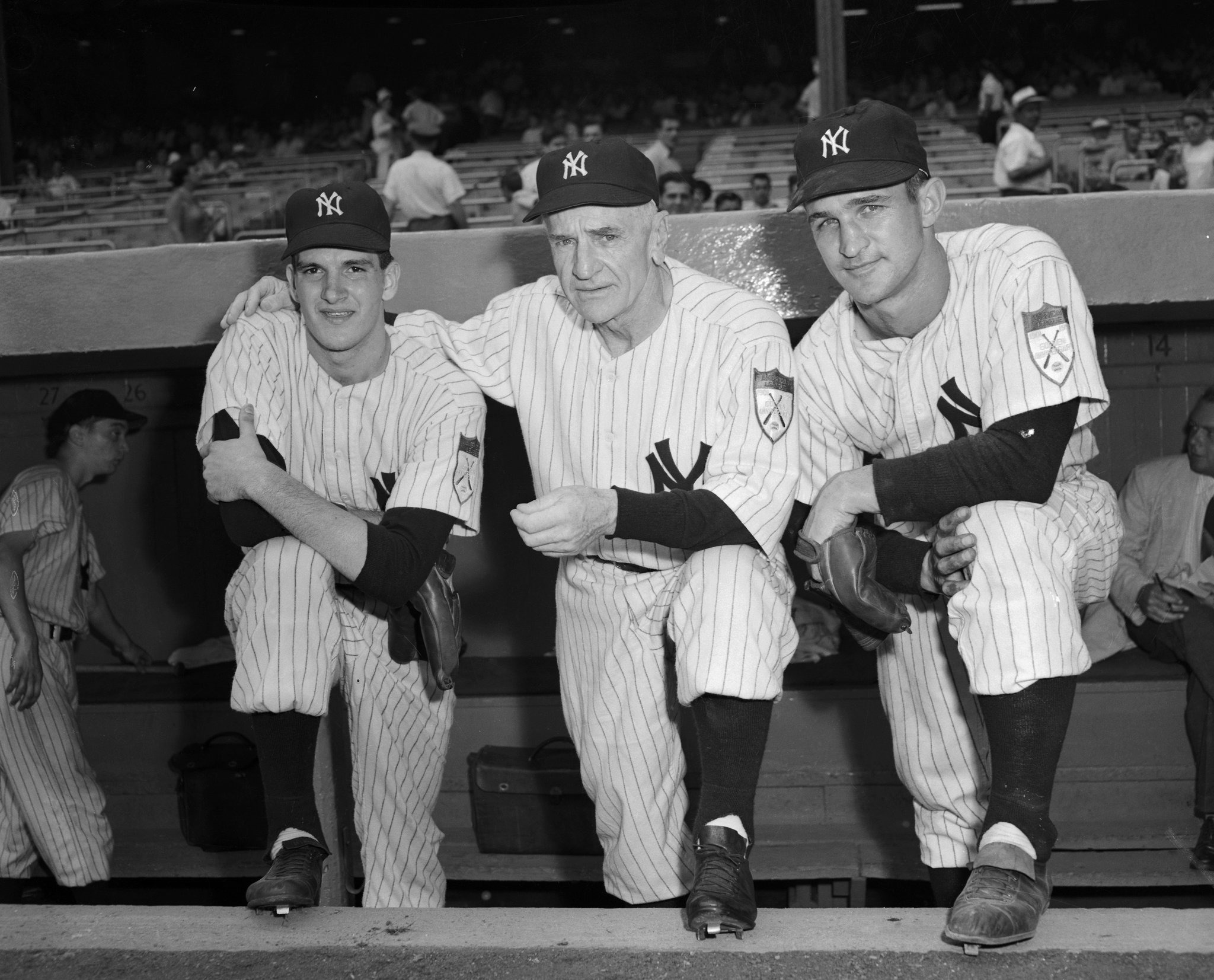
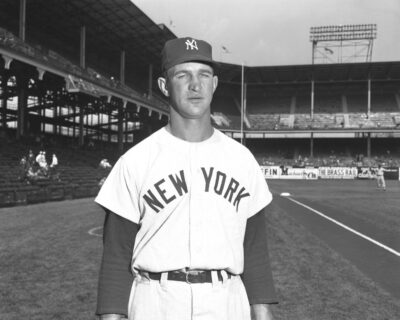
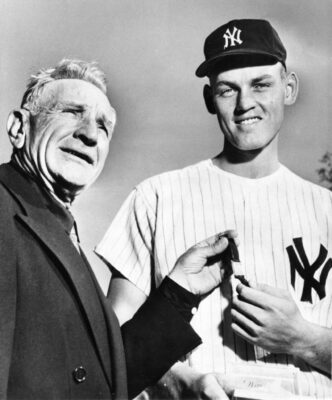
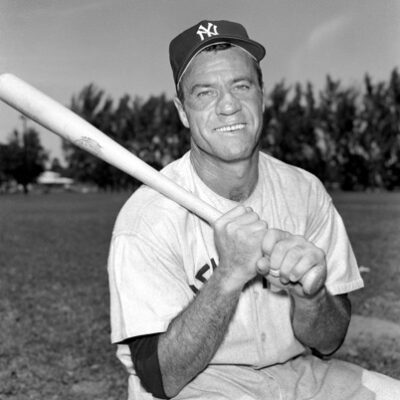
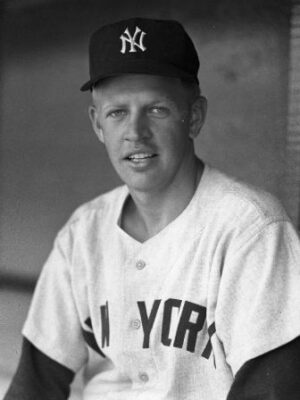
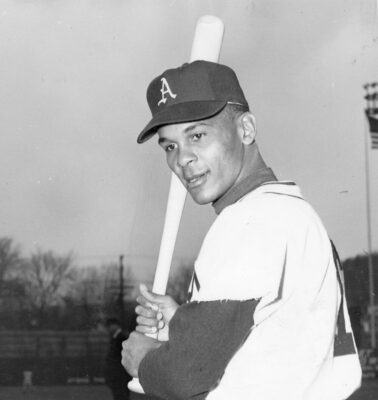
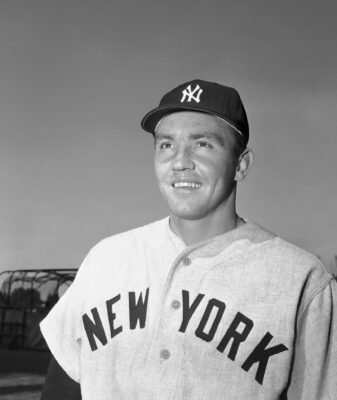
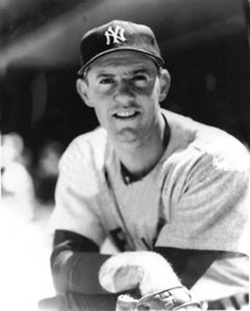
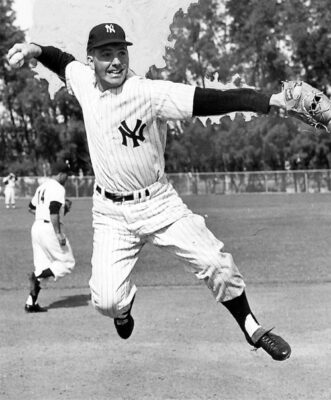
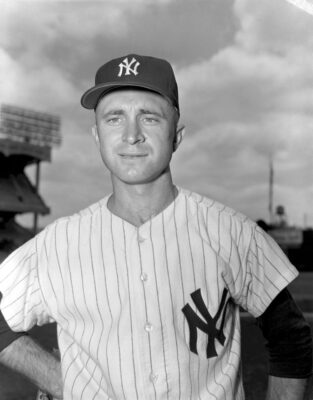
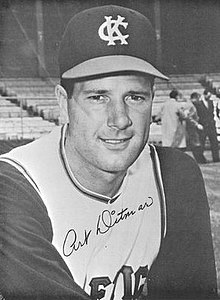
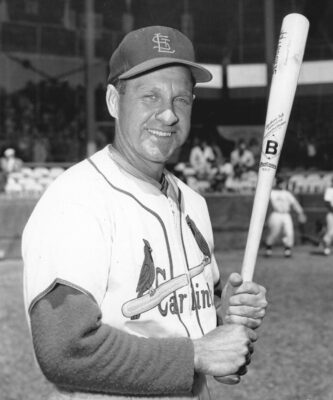
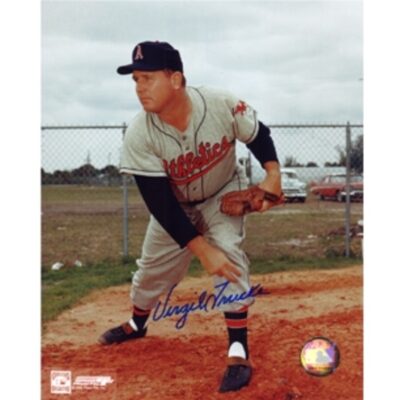
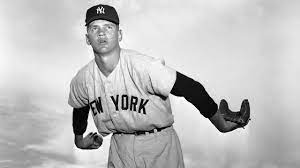
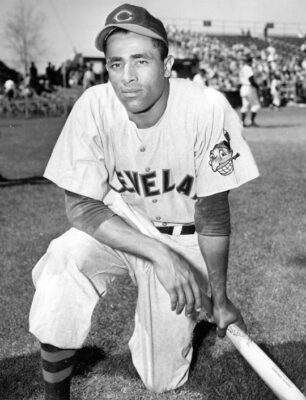
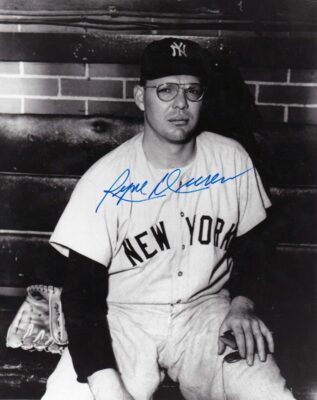
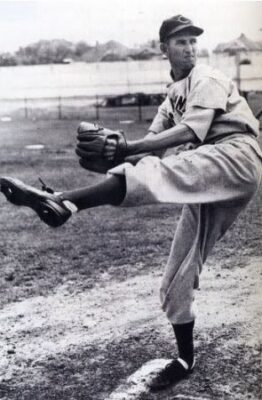
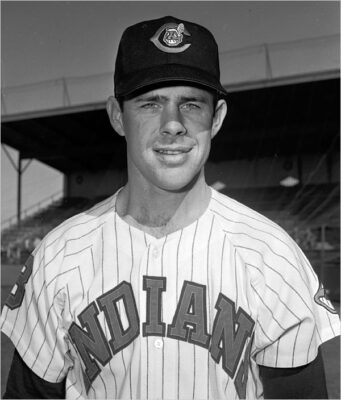
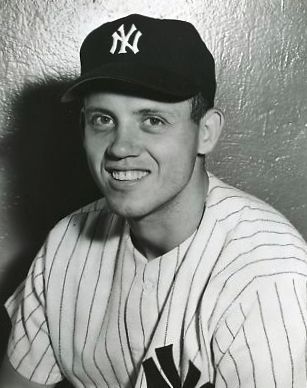
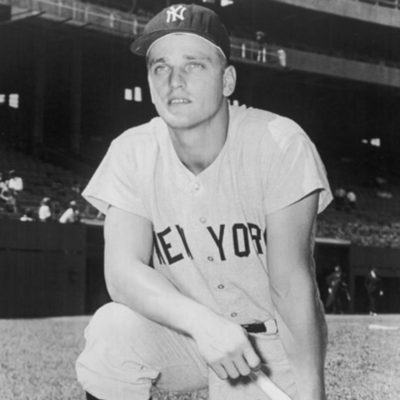
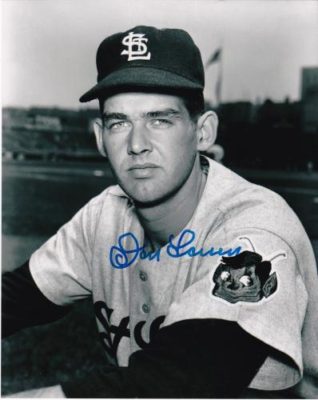
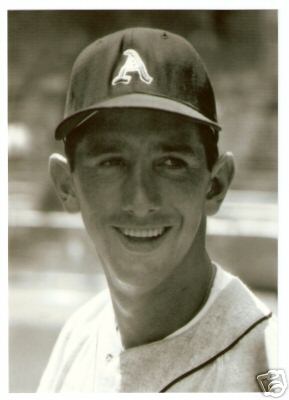

I can hardly wait for the second installment. Can millions of fans and sportswriters have been wrong all these decades? Indeed, for half a century?
Hard to believe but maybe true…
There was a corrupt relationship between Arnold Johnson and Yankee owners Topping and Webb. Kansas City Star writer Ernie Mehl was involved too. Johnson was paying him off to write favorable articles about the A’s. Johnson was getting money under the table from the Yankee owners.
Very interesting…
Great article.
I lived through many of these trades as a kid but haven’t thought about them in years and never in such detail. Growing up a Yankee fan many of these players even the more obscure ones were household names. Who could forget Ryne Duren and his thick spectacles? He was a fireballer with suspect control whose first pitch always wound up at the back stop. No batter would ever dig in against him.
We rooted for Jerry Lumpe, #17 Bob Cerv and of course #11 Hector Lopez and his turned around batting stance. We thought Harry “Suitcase” Simpson had the greatest nickname and Duke Maas, with the double “a”, screwed up the spelling rules we were just learning.
We were sad to see Norm Seibern go, and Art Ditmar shared a birthday with my mother. Terry and Maris became big stars, but my favorite was Clete Boyer. As a senior softball player, I still wear #6 in honor of Cletis.
Thanks Steve…stay tuned…Vince thinks Clete Boyer was a better fielder than Brooks Robinson, and I think will have more to say on that issue.
Right, Vince, always thought KC was a Yankee farm. You’ve shattered that myth already! Best Yankees acquisition was from the Giants, Johnny Mize, with one super year and a few more as a fine PH.
Giants could have had Enos Slaughter from the Cards in ’52, for Eddie Stanky to manage them. And to offset Mays going into the Army. Instead, they got Chuck Diering. Chuck drove in two runs, with a 66 OPS +. Enos batted .300, with 101 RBI and a 130 OPS plus.
Wow! Now that’s interesting!
I agree with Vince. Clete was a better fielder than Brooks. Clete had a rifle for an arm. Brooks was miles ahead as a hitter though
Mythbusting is interesting work. Can’t wait to see second installment. My five cents (inflation): Duke Maas was better than advertised with the Yanks, 7-3, 14-8, 5-1, 1958, 59, 60. Good fielding was a big part of Yankee success in those days; Lumpe, Seibern, Andy Carey, and especially Woodie Held were not particularly adept in the field compared to Bobby Richardson, Roger Maris, and Clete Boyer. Lumpe and Richardson’s career hitting stats were close as were Maris/Seibern. Yankees thought enough of Billy Hunter to think he was their replacement for Phil Rizzuto (1955), could be A’s thought he just needed more seasoning. George Weiss, Yankee General Manager used cash sales of unneeded players to boost great Yankee farm system and scouting. Learned from Branch Rickey.
What I read: Arnold Johnson and Yankees were entwined financially, Johnson owned Yankee Stadium and Kansas City stadium before he bought the A’s. He sold Yankee Stadium back to Yankees and the Kansas stadium to Kansas City as part of his purchase of the A’s. Yankees never charged the indemnity for territorial rights for Johnson taking over their minor league team, Kansas City Blues. This was suspect.
A’s-Yankees trade of 1953 should also be included in this mythbusting.
Kevin,
As for Maas, you are correct. The Yankees did get some value out of the trade. His problem was that his best year was the year that the Yanks were not very good. I guess Maas was more in the category of pitcher who could win with the Yanks but not with the A’s a la Ditmar, Shantz, Terry, Larson et al. rather than in the useless to both teams category like Pisoni, Kryhoski, Sleater et al. Even if you move this trade over into the favors the Yankee column (slightly) because of Maas, I stand by my overall conclusion which will be demonstrated in Installment #2 which by the way will have what you are looking for regarding the 1953 trade.